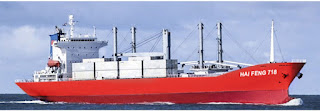A jewel of world-wide conservation efforts, the "mysterious isles" visited by naturalist Charles Darwin in the 19th century have a 21st century problem: plastic waste. Plastic waste washed ashore by wind and currents is building up and posing a threat to indigenous wildlife unique to the island archipelago. [photo above] The shallow bays on windward islands are habitat for seals, pelicans, penguins and marine iguanas. Sea turtles nest here. Research has shown that plastics have entered the food chain. Microplastics, partially degraded particles, are especially toxic since they can cause genetic damage from zooplankton to humans, and are often contaminated with chemicals. A recent study found sea turtles have up to 86% plastic debris in their excrement.
The Galapagos were declared a World Heritage Site in 1978. This designation and a marine reserve established by Ecuador has helped preserve the incredible biodiversity of the island chain. 97% of the islands remain uninhabited. Located at the intersection of three major ocean currents that are responsible, along with prevailing winds, for bringing life to the originally barren volcanic land mass. The Humboldt Current is the largest. It brings cold nutrient filled water from the Antarctic sweeping along coast of South America before turning west to the islands. These currents are now bringing plastic debris. About 40% of the debris come from Ecuador, Peru and China.
 |
| a refrigerated Chinese mother ship |
 |
| squid fishing off Galapogos |
conducts waste clean ups on the inhabited islands, The debris is shipped 600 miles to Guayaquil, Ecuador where it is recycled or put in a landfill. Last year 13 tons were collected. The effort is not logistically easy, or inexpensive. The more remote islands can take up to 15 days to reach. Weather conditions make it impossible to clean up from May to November. If the debris are not collected, the plastic will partially breakdown into microplastics. Birds use shredded plastic debris as nest building material. National laws are not enough to reduce the problem, international agreement and enforcement is needed. [photos: The Guardian]
